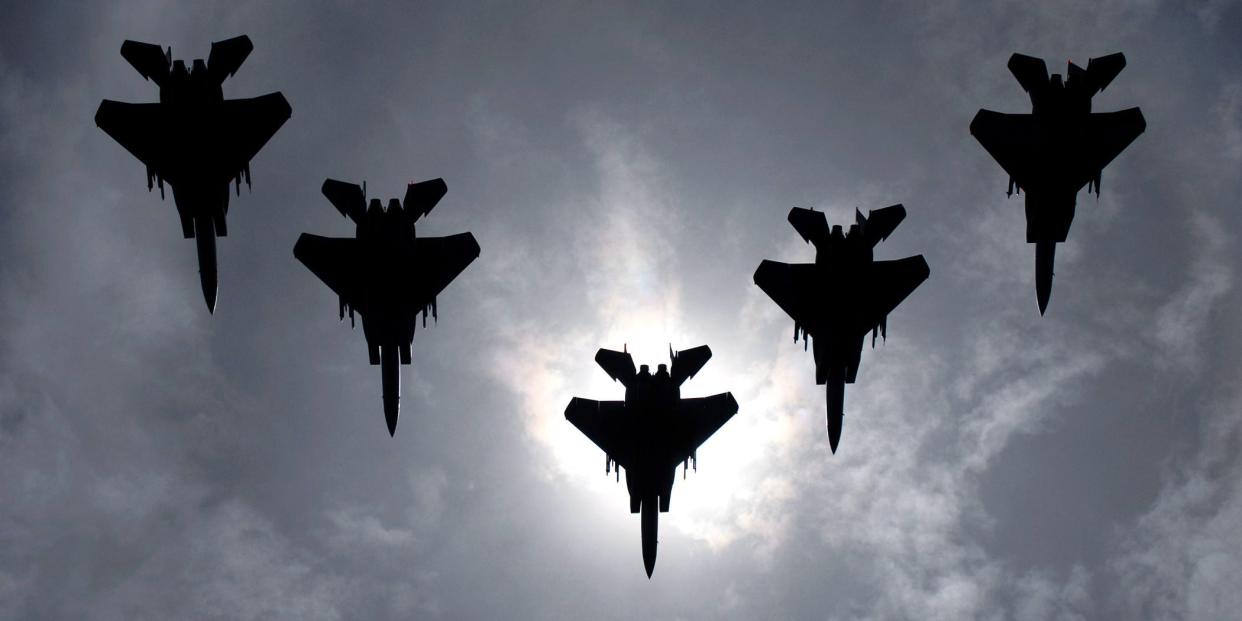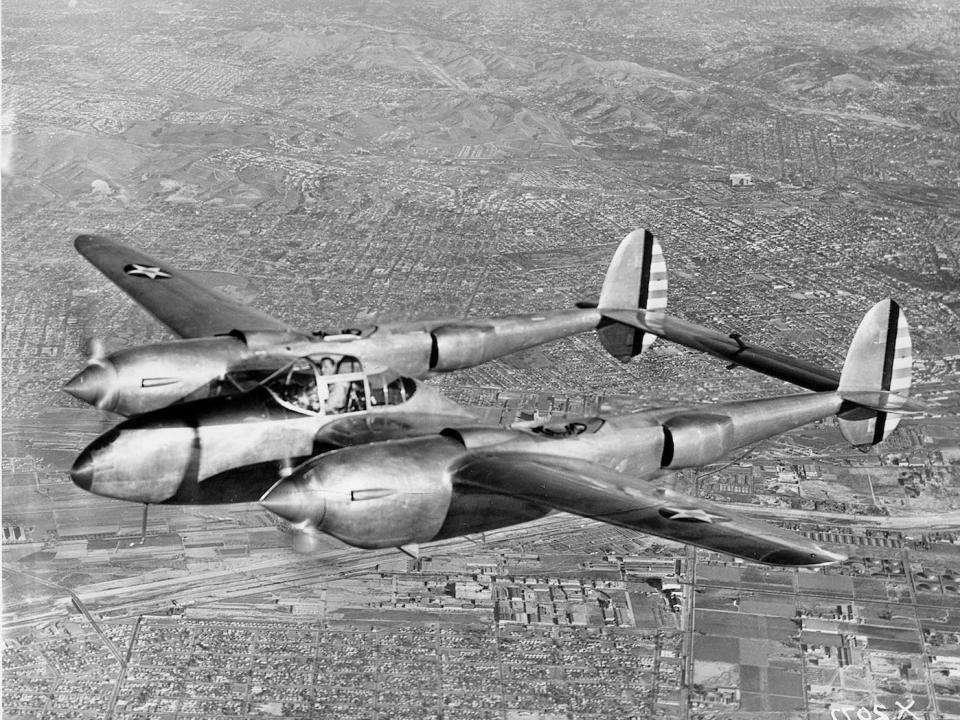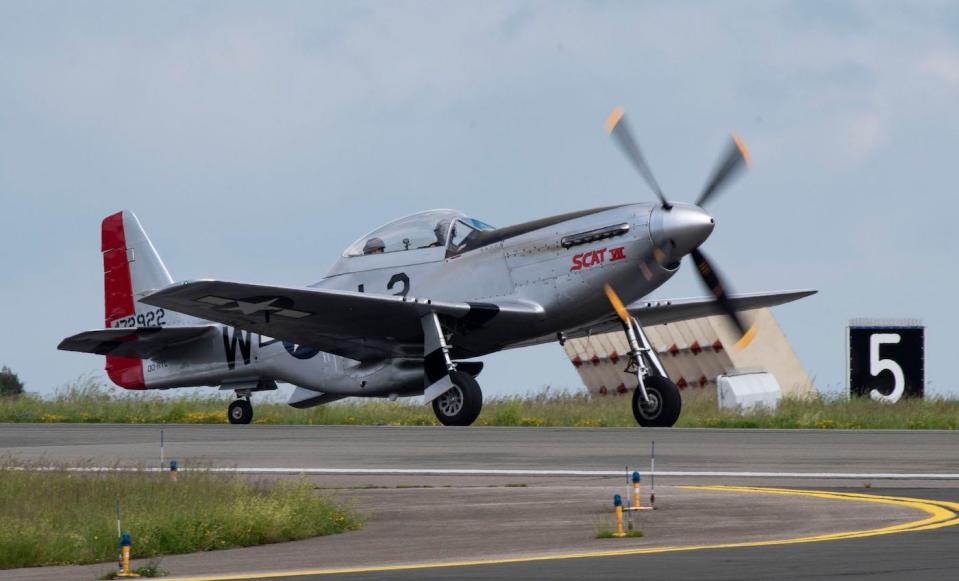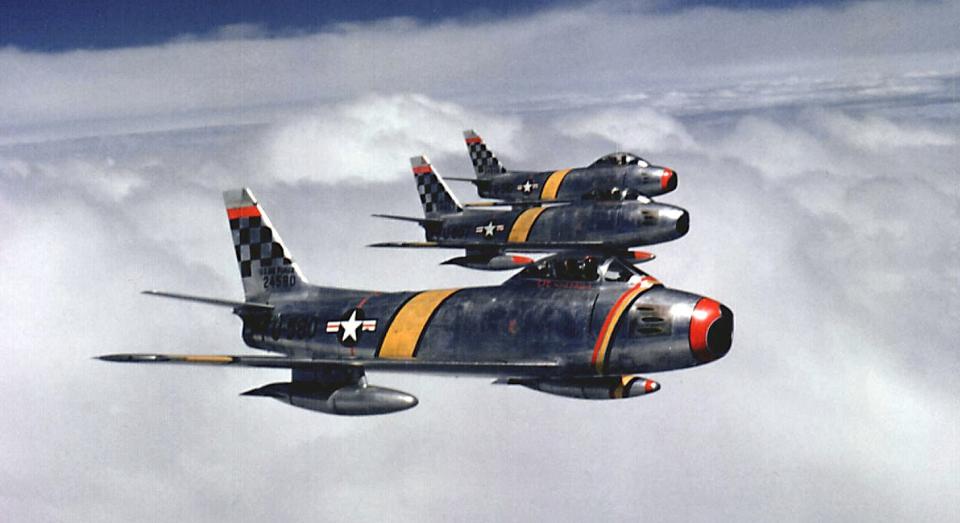A short history of US fighter aircraft — from biplanes to stealth jets

For the better part of a century, US pilots have fought to control the sky over battlefields all around the world.
Fighter aircraft have always been at the leading edge of those battles, and the US has fielded some of the most advanced fighters ever built.
The surest way to secure the skies over a battlefield is with fighter aircraft, and nobody knows that better than the US Air Force.
Though America's aerial-warfare beginnings were humble, the Air Force now has the world's best fighters.
With over 100 years of service, Air Force fighter aircraft have met every challenge they've faced and are constantly evolving in order to control the skies.
SPAD XIII

World War I was the first combat experience for American pilots, who were then part of the Aeronautical Division of the US Signal Corps.
When the US entered the war in 1917, it was "almost totally unprepared in aeronautical experience, equipment, and personnel," according to a post-war report.
With no experience or fighter aircraft of its own, the US had to purchase British- and French-made fighters. The most well-known was the SPAD XIII.
The SPAD XIII was a French biplane armed with two Vickers machine guns that used an interrupter gear to fire through the propellers. It could carry four 25-pound bombs and had a top speed of about 135 mph.
With over 8,000 built, the SPAD XIII was one of the most-produced fighters of the war and was the US's primary fighter. The two most successful US aces of the war, Capt. Eddie Rickenbacker and 2nd Lt. Frank Luke, scored most of their kills with SPAD XIIIs.
P-38 Lightning and P-51 Mustang

By the time of World War II, US pilots, then part of the US Army Air Corps, were much better prepared.
US manufacturers had developed dozens of fighter designs. One was the P-38 Lightning, which was introduced in 1941 and was one of the fastest in the world, with a top speed over 400 mph. It was also used extensively for reconnaissance and obtained 90% of the aerial film recorded over Europe.
A P-38 was the first US fighter flown by an American
to shoot down a German aircraft, and its success over Europe earned it the nickname "the fork-tailed devil" among Germans, referring to its distinctive twin-tail design.
The P-38 truly distinguished itself in the Pacific, however, claiming more Japanese aircraft than any other fighter. The two best US aces of the war, Maj. Richard Bong and Maj. Thomas McGuire, scored all of their victories with P-38s in the Pacific.

But the P-51 Mustang is perhaps the best-known American fighter of World War II. Introduced in 1942, it carried six M2 Browning .50-caliber machine guns in its wings. Racks under the wings could carry 10 rockets or up to 1,000 pounds of bombs.
The Mustang could reach 425 mph and 40,000 feet, and was the US's primary fighter in Europe, though it also served as a fighter-bomber.
P-51s are believed to have shot down 4,950 enemy aircraft. They were so successful and so numerous (over 15,000 built) that British planes were able to resume daylight bombing raids on Germany in 1944 with P-51s escorting them the whole way.
A Senate committee called it "the most aerodynamically perfect pursuit plane in existence," and Hermann Göring, who commanded Germany's air force, reportedly said after the war that "when I saw Mustangs over Berlin, I knew the jig was up."
The P-51 was the main US fighter until the F-86 Sabre arrived in 1949, but it continued to serve in the Korean War.
F-86 Sabre

The Sabre wasn't the Air Force's first jet fighter, but none of its predecessors could handle the Soviet-made MiG-15 when the Korean War started in 1950.
As a result, the Sabre was rushed to the front line. Armed with six .50-caliber machine guns and 16 rockets, the Sabre's top speed was 650 mph and its service ceiling
was over 45,000 feet.
Its excellent maneuverability, combined with the fact that most US pilots were hardened World War II veterans, enabled the Sabre to wreak havoc on North Korean, Chinese, and Soviet pilots.
Sabres shot down hundreds of MiGs. One post-war study put the loss ratio at almost 2:1. All but one of the American aces of the Korean War flew F-86s.
F-4 Phantom II

In 1960, the US Navy adopted a new jet, the F-4 Phantom II. Unlike its predecessors, the Phantom was designed as a fighter-bomber, allowing the Navy to field one model for multiple missions.
The Air Force adopted the F-4C variant in 1963. It was a twin-seat fighter-bomber capable of carrying up to 15,983 pounds of ordnance. It usually carried eight air-to-air missiles and eight 750-pound bombs.
The Phantom II was equipped with afterburners that made its top speed 1,485 mph, though it usually cruised at 590 mph. Its service ceiling was 56,100 feet.
It was the Vietnam War's defining jet. Air Force F-4Cs, with their speed and advanced radar, shot down 78% of the MiGs downed by the Air Force during the war. Only 33 of the 445 Phantoms the Air Force lost during the war were downed in aerial combat.
F-15 Eagle and F-16 Fighting Falcon

With the lessons of Vietnam, the Air Force was determined to keep the advantage in fighter technology. The future of aerial warfare required fast, cost-effective fighters that could dominate the skies while striking ground targets.
The result was the F-15 Eagle and the F-16 Fighting Falcon. The F-15 was adopted in 1976 and the F-16 in 1978.
The F-15 was originally designed to carry eight air-to-air missiles, but later models could carry up to two dozen. It also has a 20 mm rotary cannon, and some variants can carry 23,000 pounds of ordnance.
The F-16, designed as a lightweight fighter, has a 20 mm rotary cannon and can carry eight missiles and up to 8,000 pounds of bombs.
Both are capable of speeds over 1,500 mph and can fly as high as 65,000 feet.
The F-15 has one of the best reputations among fighter jets. Boeing claims it has never been shot down by enemy aircraft, giving it a remarkable kill ratio of 104:0. (Israel's air force is mostly responsible for that tally.) The F-16 is also highly regarded.
Though they were designed and built in the Cold War, the F-15 and F-16 remain the backbone of the Air Force's fighter fleet.
F-22 Raptor and F-35 Lightning II

As the Cold War ended, a new type of fighter was being created with an emphasis on speed, maneuverability, and a new characteristic — stealth. They were built with new angled designs, radar-absorbent material, and new electronics that made it harder for radar to spot.
The first, the F-22 Raptor, was adopted in 2005. Its internal weapons bays can hold up to eight air-to-air missiles or two 1,000-pound bombs. Four external hardpoints allow it to carry more missiles or more than 9,00
0 pounds of ordnance. It also has a 20 mm rotary cannon.
The second, the F-35 Lightning II, was adopted in 2016. It carries a similar payload.
Neither have faced enemy fighters head-to-head, but they have had promising results in numerous simulations. They've also bombed ISIS targets in Syria.
The US relies on F-22s and F-35s to check rivals around the world, and they've been deployed to important US bases in Japan, Korea, and the United Arab Emirates.
Read the original article on Business Insider

